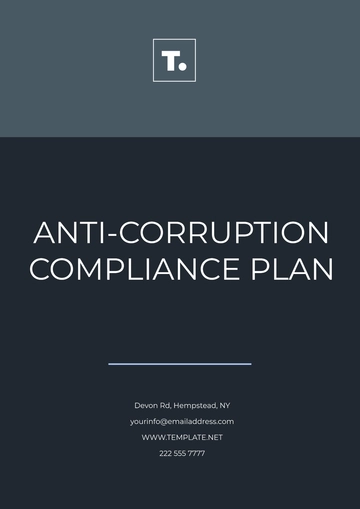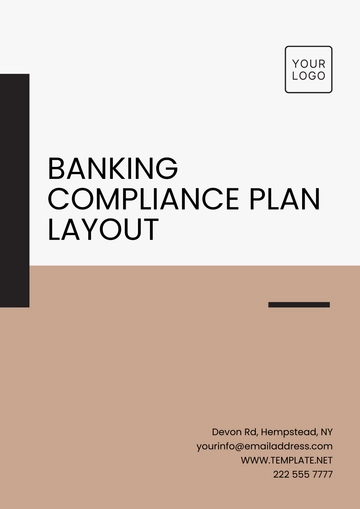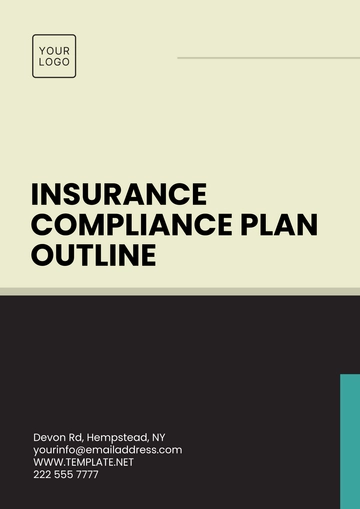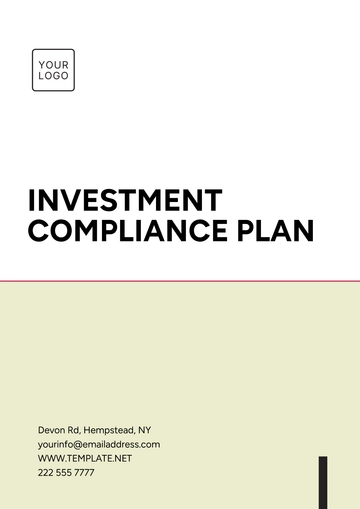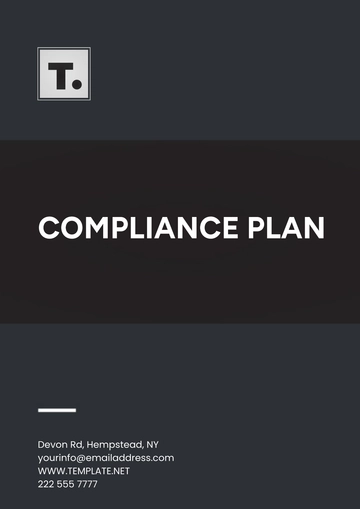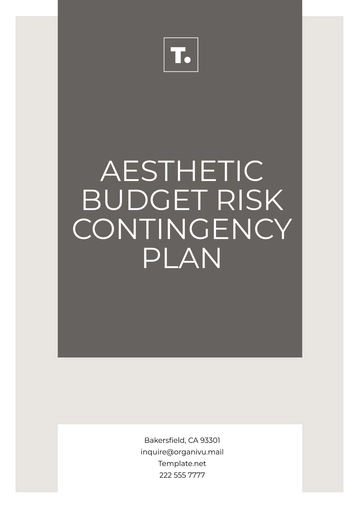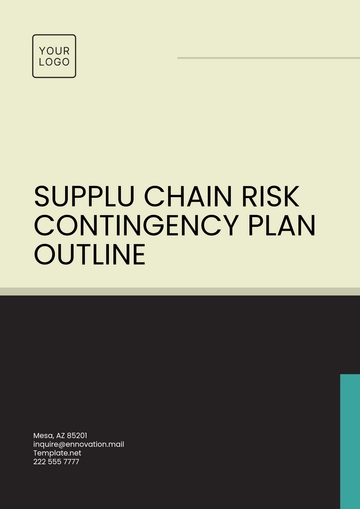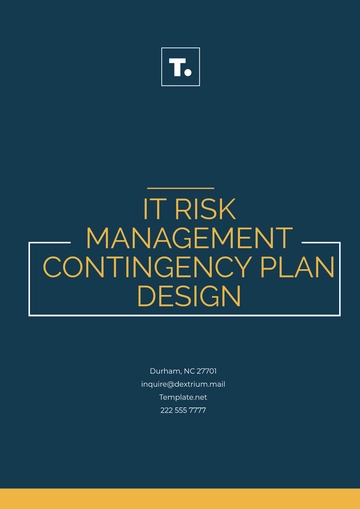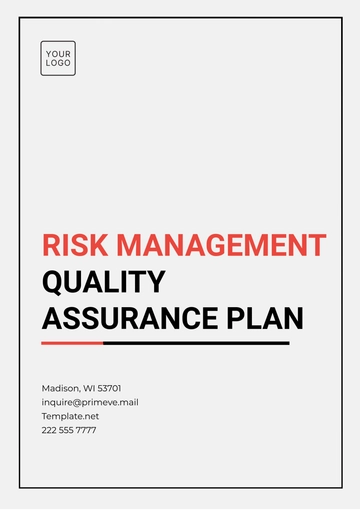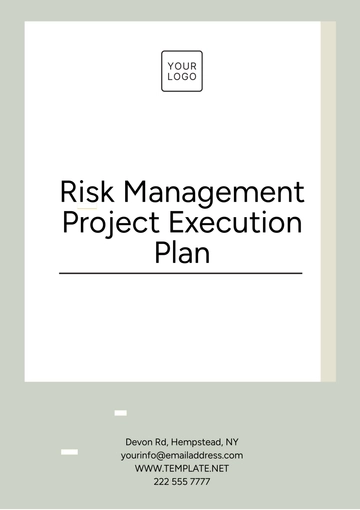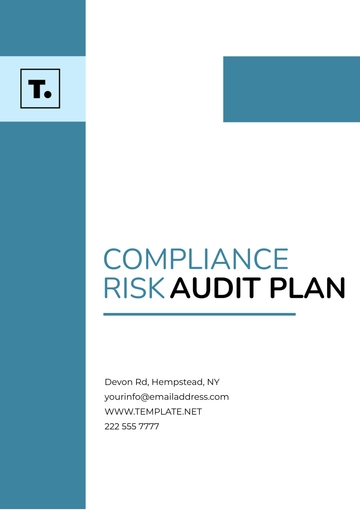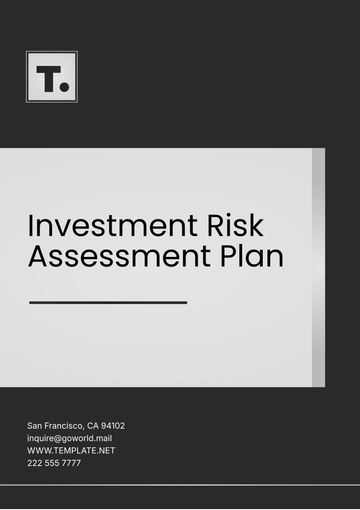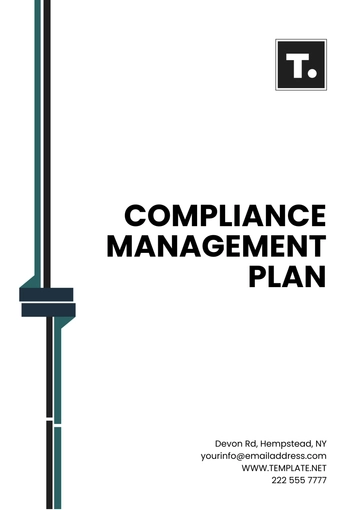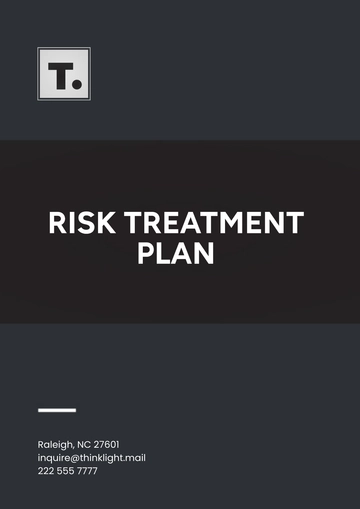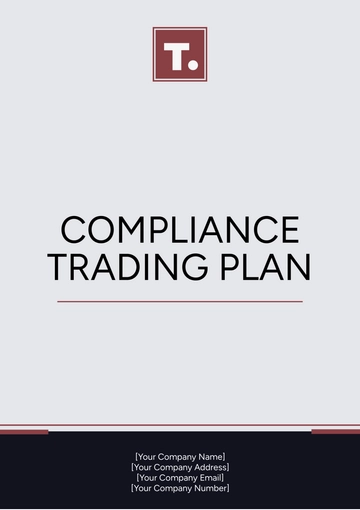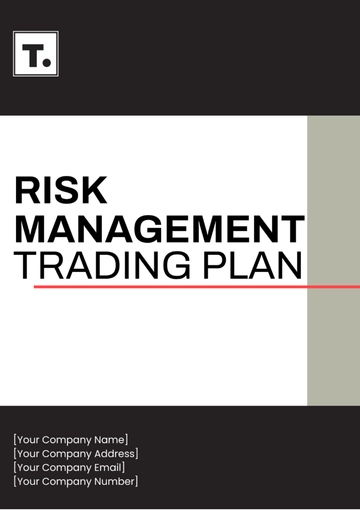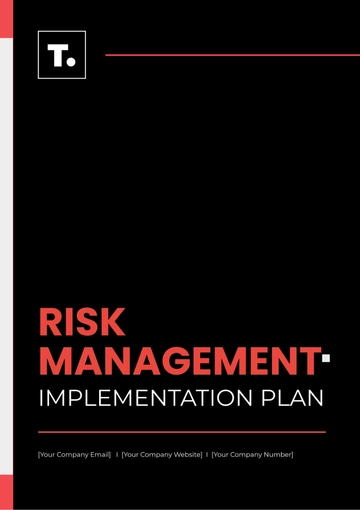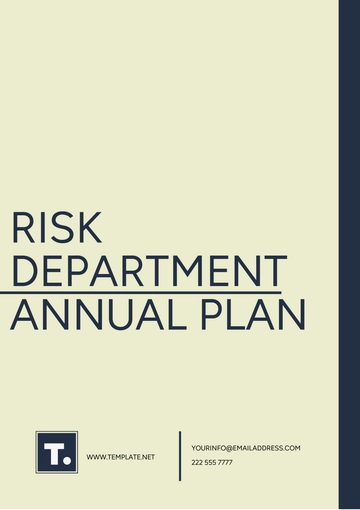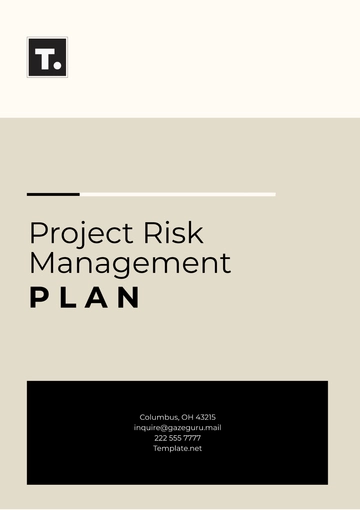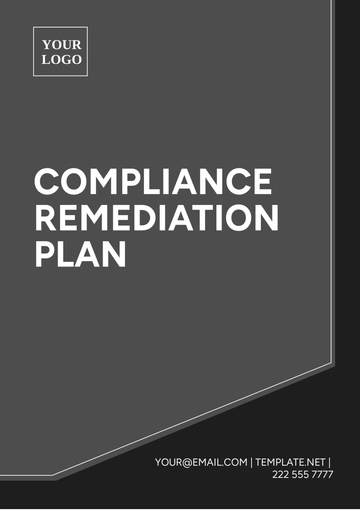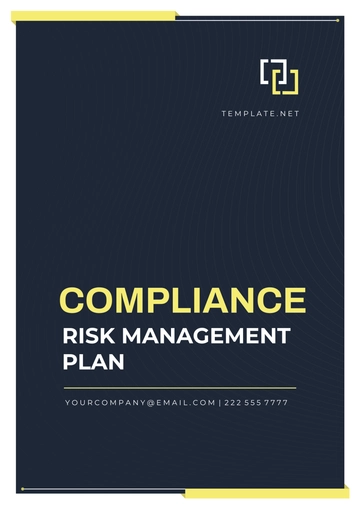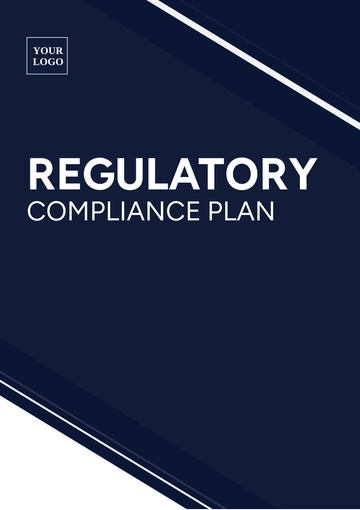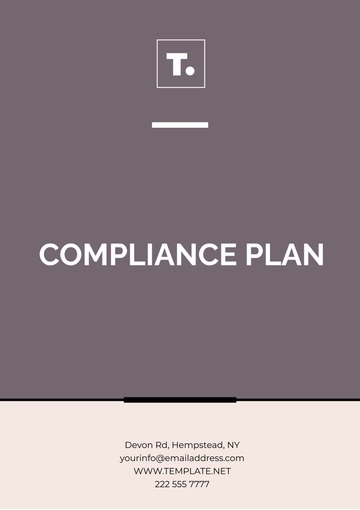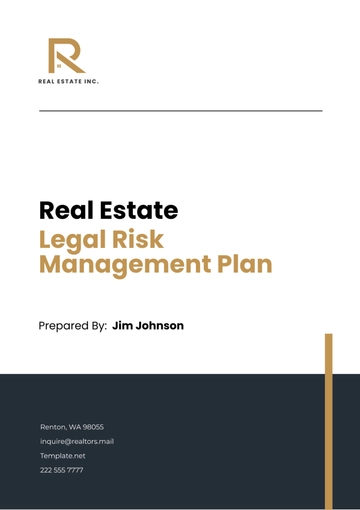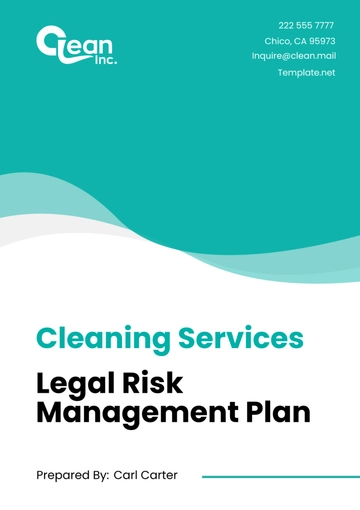Free Risk Treatment Plan
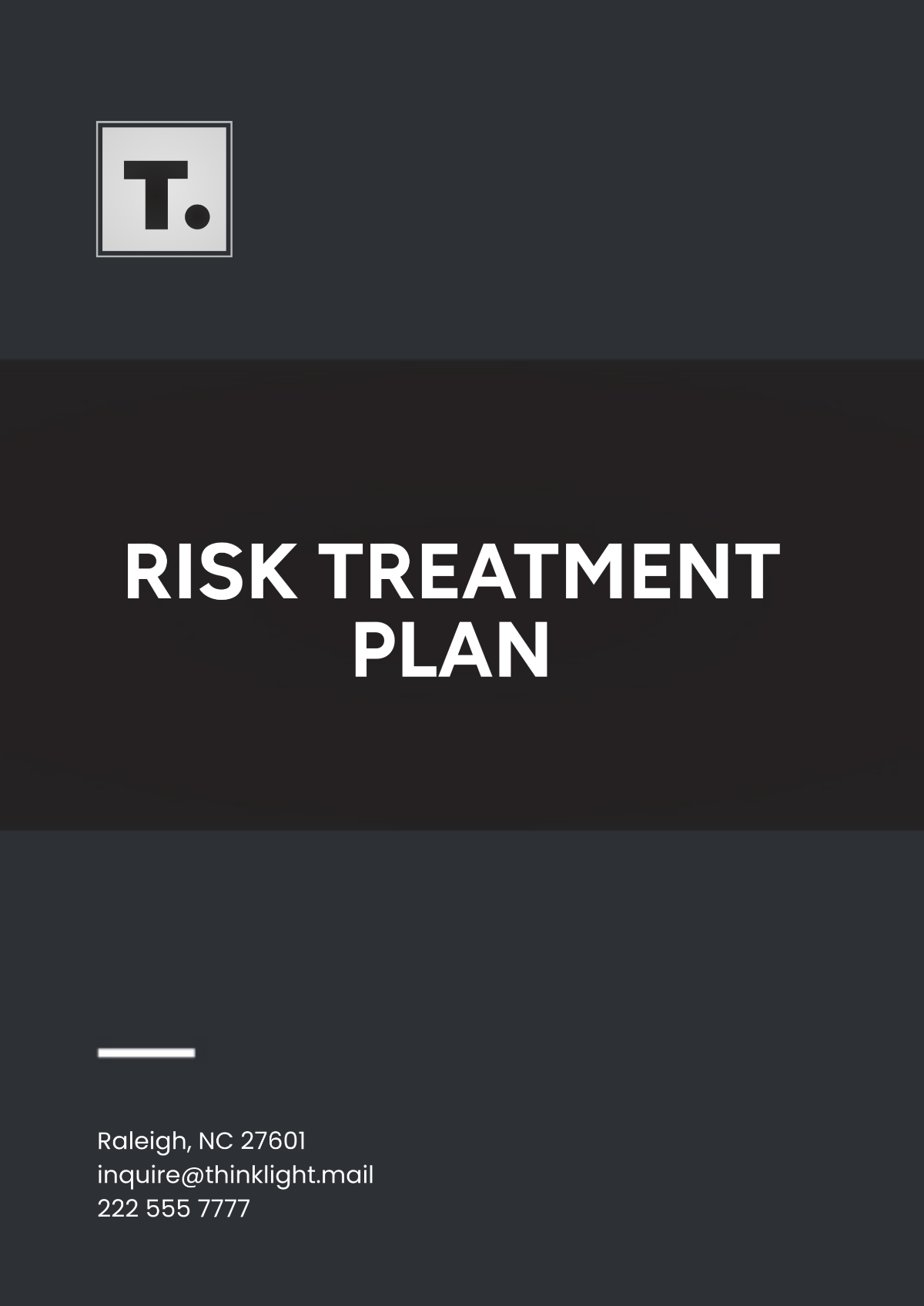
Prepared by: [Your Name]
I. Introduction
This Risk Treatment Plan outlines the strategies and actions to manage and mitigate identified risks within [Your Company Name]. It aims to ensure the effective management of risks to safeguard the organization's objectives, resources, and stakeholders.
II. Risk Identification
The following risks have been identified through a comprehensive assessment:
Strategic Risks: Potential shifts in market trends or competitive landscape.
Operational Risks: Disruption of key business processes due to technological failures or supply chain disruptions.
Financial Risks: Exposure to fluctuations in currency exchange rates or liquidity constraints.
Compliance Risks: Non-compliance with regulatory requirements or industry standards.
Reputational Risks: Damage to the organization's reputation due to negative publicity or stakeholder dissatisfaction.
III. Risk Analysis
Risk Category | Potential Impact | Likelihood |
|---|---|---|
Strategic Risks | High impact due to the potential to affect long-term goals | Moderate likelihood |
Operational Risks | Moderate impact, especially given the complexity | High likelihood |
Financial Risks | The impact varies based on market conditions | Variable likelihood |
Compliance Risks | High impact due to legal repercussions | Moderate likelihood |
Reputational Risks | High impact on stakeholder trust and brand image | Dependent on incident |
IV. Risk Treatment Strategies and Action Plan
Risk Treatment | Strategy | Action Plan |
|---|---|---|
Risk Avoidance | Implement measures to diversify product offerings and market presence | Conduct market research to identify new growth opportunities in untapped markets within the industry |
Risk Reduction | Enhance cybersecurity measures and conduct regular employee training | Invest in advanced threat detection systems and conduct regular cybersecurity training for employees |
Risk Transfer | Obtain appropriate insurance coverage to transfer financial risks | Engage with insurance brokers to assess coverage options and negotiate favorable terms |
Risk Acceptance | Develop a compliance framework and robust monitoring and reporting mechanisms | Develop a compliance framework to ensure adherence to relevant regulations and standards |
V. Monitoring and Review
Regular monitoring mechanisms will be established to track the effectiveness of risk treatment strategies. This will include quarterly reviews to assess progress, identify emerging risks, and make necessary adjustments to the Risk Treatment Plan. Additionally, an annual comprehensive review will be conducted to evaluate the overall effectiveness of risk management efforts and ensure alignment with organizational objectives.
VI. Communication Plan
Internally, regular updates regarding risk management activities will be disseminated through various channels, including company-wide meetings, internal newsletters, and dedicated communication platforms. Externally, key stakeholders will receive quarterly reports outlining the organization's risk exposure, mitigation efforts, and progress toward achieving risk management objectives. Transparent and proactive communication will foster trust and alignment with stakeholders.
VII. Conclusion
In conclusion, this Risk Treatment Plan provides a comprehensive framework for managing and mitigating risks within [Your Company Name]. By implementing the outlined strategies and actions, we aim to enhance organizational resilience, protect stakeholder interests, and support the achievement of strategic objectives. Regular monitoring, communication, and review processes will ensure the continued effectiveness of risk management efforts in an ever-evolving business environment.
- 100% Customizable, free editor
- Access 1 Million+ Templates, photo’s & graphics
- Download or share as a template
- Click and replace photos, graphics, text, backgrounds
- Resize, crop, AI write & more
- Access advanced editor
Manage risks effectively with the Risk Treatment Plan Template from Template.net. This customizable and downloadable template is essential for identifying, assessing, and mitigating risks in your projects or business. Editable in our AI Editor Tool, it allows you to tailor each aspect to your specific requirements. Print your detailed plans to ensure a systematic approach to risk management, enhancing safety and compliance.
You may also like
- Finance Plan
- Construction Plan
- Sales Plan
- Development Plan
- Career Plan
- Budget Plan
- HR Plan
- Education Plan
- Transition Plan
- Work Plan
- Training Plan
- Communication Plan
- Operation Plan
- Health And Safety Plan
- Strategy Plan
- Professional Development Plan
- Advertising Plan
- Risk Management Plan
- Restaurant Plan
- School Plan
- Nursing Home Patient Care Plan
- Nursing Care Plan
- Plan Event
- Startup Plan
- Social Media Plan
- Staffing Plan
- Annual Plan
- Content Plan
- Payment Plan
- Implementation Plan
- Hotel Plan
- Workout Plan
- Accounting Plan
- Campaign Plan
- Essay Plan
- 30 60 90 Day Plan
- Research Plan
- Recruitment Plan
- 90 Day Plan
- Quarterly Plan
- Emergency Plan
- 5 Year Plan
- Gym Plan
- Personal Plan
- IT and Software Plan
- Treatment Plan
- Real Estate Plan
- Law Firm Plan
- Healthcare Plan
- Improvement Plan
- Media Plan
- 5 Year Business Plan
- Learning Plan
- Marketing Campaign Plan
- Travel Agency Plan
- Cleaning Services Plan
- Interior Design Plan
- Performance Plan
- PR Plan
- Birth Plan
- Life Plan
- SEO Plan
- Disaster Recovery Plan
- Continuity Plan
- Launch Plan
- Legal Plan
- Behavior Plan
- Performance Improvement Plan
- Salon Plan
- Security Plan
- Security Management Plan
- Employee Development Plan
- Quality Plan
- Service Improvement Plan
- Growth Plan
- Incident Response Plan
- Basketball Plan
- Emergency Action Plan
- Product Launch Plan
- Spa Plan
- Employee Training Plan
- Data Analysis Plan
- Employee Action Plan
- Territory Plan
- Audit Plan
- Classroom Plan
- Activity Plan
- Parenting Plan
- Care Plan
- Project Execution Plan
- Exercise Plan
- Internship Plan
- Software Development Plan
- Continuous Improvement Plan
- Leave Plan
- 90 Day Sales Plan
- Advertising Agency Plan
- Employee Transition Plan
- Smart Action Plan
- Workplace Safety Plan
- Behavior Change Plan
- Contingency Plan
- Continuity of Operations Plan
- Health Plan
- Quality Control Plan
- Self Plan
- Sports Development Plan
- Change Management Plan
- Ecommerce Plan
- Personal Financial Plan
- Process Improvement Plan
- 30-60-90 Day Sales Plan
- Crisis Management Plan
- Engagement Plan
- Execution Plan
- Pandemic Plan
- Quality Assurance Plan
- Service Continuity Plan
- Agile Project Plan
- Fundraising Plan
- Job Transition Plan
- Asset Maintenance Plan
- Maintenance Plan
- Software Test Plan
- Staff Training and Development Plan
- 3 Year Plan
- Brand Activation Plan
- Release Plan
- Resource Plan
- Risk Mitigation Plan
- Teacher Plan
- 30 60 90 Day Plan for New Manager
- Food Safety Plan
- Food Truck Plan
- Hiring Plan
- Quality Management Plan
- Wellness Plan
- Behavior Intervention Plan
- Bonus Plan
- Investment Plan
- Maternity Leave Plan
- Pandemic Response Plan
- Succession Planning
- Coaching Plan
- Configuration Management Plan
- Remote Work Plan
- Self Care Plan
- Teaching Plan
- 100-Day Plan
- HACCP Plan
- Student Plan
- Sustainability Plan
- 30 60 90 Day Plan for Interview
- Access Plan
- Site Specific Safety Plan
